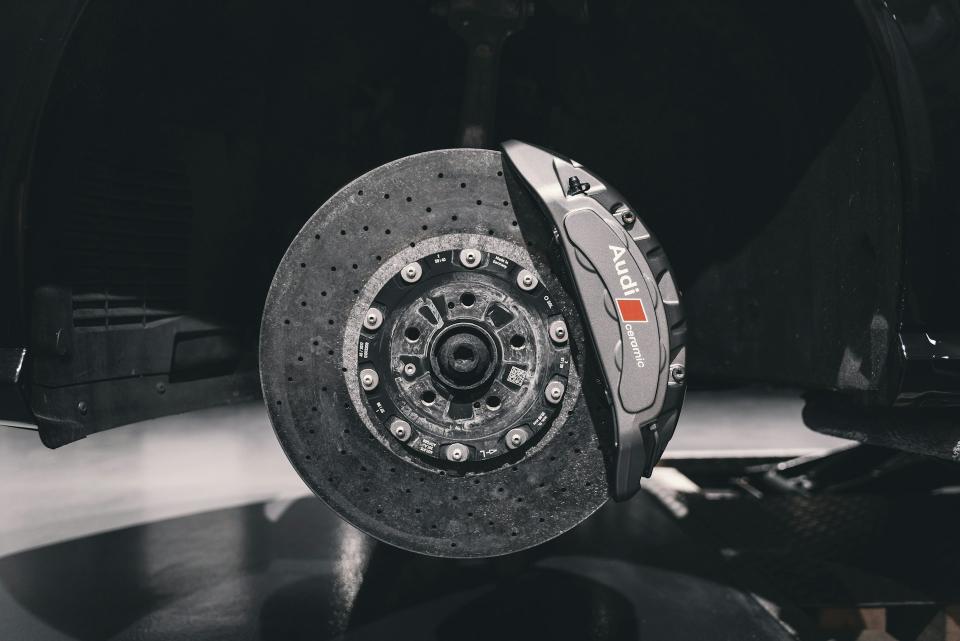It's no secret that a car's braking system is one of the most important when it comes to traffic safety. It facilitates efficient stopping of the car, which is essential for any traffic participant. Being so important, manufacturers are always in a race with each other to provide people with the best performing braking systems possible. This competition is beneficial because it leads to tremendous progress.
Contents:
1. Braking system – brief history and its evolution
2. Braking system - classification according to the role it plays
1. Braking system – brief history and its evolution

Photo by Sergeant Midili on Unsplash.com
The history of braking systems is a fascinating and evolving one, marked by technological innovations in vehicle safety. When the first cars appeared, the braking system of vehicles was not integrated, stopping was done with the help of manual brakes . Generally, lever systems were used that pressed a wooden pad against the wheel rim or other braking systems used on carriages. But with the increase in speed, the braking system of motor vehicles became more and more important, this led to fantastic advances.
An example of this is the discovery of hydraulic brakes around 1920. They allowed more effective pressure to be applied to the wheel using a special fluid. This innovation in the car braking system revolutionized the way cars stopped and led to significant improvements in road safety.
Another important stage in the history of braking systems was the introduction of disc brakes. They have become very popular due to their superior stopping power and resistance to overheating. Disc brakes largely replaced drum brakes and offered better performance, especially in extreme driving conditions.
The next major step in an automobile's braking system was the introduction of ABS in the 1970s. It has now become a standard system on all new cars. It allows drivers to maintain steering control during braking, preventing wheel lock and reducing the risk of losing grip on the road surface. After this system, in the 90's appeared the electronic stability control, known as ESC, which revolutionized the braking system in cars. It marked an evolution in the way vehicles react to skidding or sliding situations, automatically intervening in braking to correct the car's trajectory and prevent accidents.
Currently, regenerative brakes have appeared in the hybrid or electric car industry. They take the kinetic energy from braking and convert it into electrical energy to charge the batteries and increase the vehicle's efficiency.
If you are interested in a car with the safest braking systems and more, you can go to car sales websites, where you will find a wide range of cars, depending on your budget.
2. Braking system - classification according to the role it plays
The car braking system is classified according to the role it plays.
The main braking system, also known as service brake or foot brake due to the fact that it is operated by the foot, has the role of reducing speed or stopping the car.
The parking brake system in cars, also known as the parking brake or parking brake, is designed to keep the vehicle in a stationary position when it is parked or stopped. This system is independent of the car's main braking system and often uses a mechanism that acts directly on the rear wheels to lock them in place. The parking brake can be operated manually via a lever, button or switch and can be mechanical, hydraulic or electronic depending on the vehicle model and technology. It is important that the stationary braking system is maintained and checked regularly to ensure proper operation and to prevent any malfunctions that could compromise the safety of the vehicle during stops.
Engine braking is another type of braking that does not use wheel brakes. This system uses the engine to slow the car down. When the driver releases the accelerator pedal, the engine begins to operate in braking mode, using internal friction to slow the car down. This process saves fuel and reduces wheel brake wear during descents or in heavy traffic. Engine braking is an effective driving technique and can be used to maintain speed control and extend the life of the car's braking system. This way of braking is extremely useful in snowy or icy conditions, greatly reducing the risk of losing control of the car.
These are the main braking systems of the car, so if you were wondering how many braking systems a car has, now you know. In addition to those mentioned, new cars have all kinds of new braking technologies, such as: cornering brake assist, emergency brake assist or systems that detect danger and brake automatically for you. It is important to know how your vehicle's braking system works in order to drive safely.
Car braking systems are one of the most important things to pay attention to when buying a car. The better your braking system, the better your chances of avoiding potential accidents. Of course, regardless of the type of car you have, follow the traffic rules and adapt your speed to the road conditions. If the road is icy and you are going too fast, no system can help you. Caution is the key to uneventful roads.
Photo source Unsplash.com
